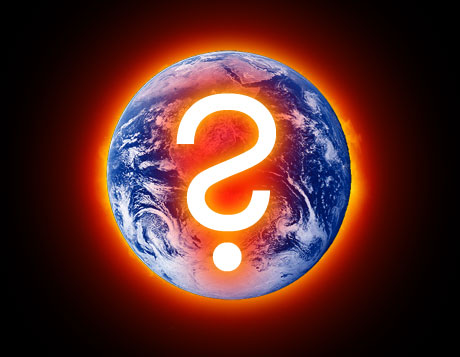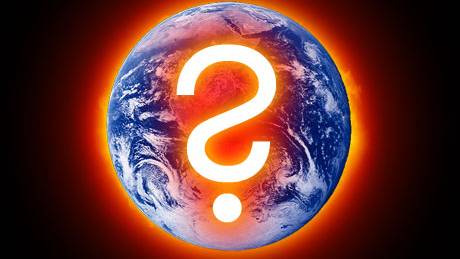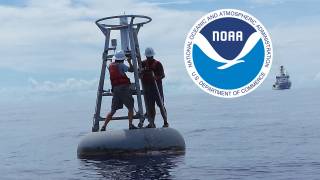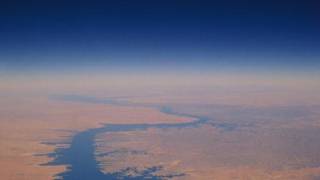An experiment that hints we are wrong on climate change
Source: timesonline.co.uk

Nigel Calder, former editor of New Scientist, says the orthodoxy must be challenged
When politicians and journalists declare that the science of global warming is settled, they show a regrettable ignorance about how science works. We were treated to another dose of it recently when the experts of the Intergovernmental Panel on Climate Change issued the Summary for Policymakers that puts the political spin on an unfinished scientific dossier on climate change due for publication in a few months’ time. They declared that most of the rise in temperatures since the mid-20th century is very likely due to man-made greenhouse gases.
The small print explains “very likely” as meaning that the experts who made the judgment felt 90% sure about it. Older readers may recall a press conference at Harwell in 1958 when Sir John Cockcroft, Britain’s top nuclear physicist, said he was 90% certain that his lads had achieved controlled nuclear fusion. It turned out that he was wrong. More positively, a 10% uncertainty in any theory is a wide open breach for any latterday Galileo or Einstein to storm through with a better idea. That is how science really works.
Twenty years ago, climate research became politicised in favour of one particular hypothesis, which redefined the subject as the study of the effect of greenhouse gases. As a result, the rebellious spirits essential for innovative and trustworthy science are greeted with impediments to their research careers. And while the media usually find mavericks at least entertaining, in this case they often imagine that anyone who doubts the hypothesis of man-made global warming must be in the pay of the oil companies. As a result, some key discoveries in climate research go almost unreported.
Enthusiasm for the global-warming scare also ensures that heatwaves make headlines, while contrary symptoms, such as this winter’s billion-dollar loss of Californian crops to unusual frost, are relegated to the business pages. The early arrival of migrant birds in spring provides colourful evidence for a recent warming of the northern lands. But did anyone tell you that in east Antarctica the Adélie penguins and Cape petrels are turning up at their spring nesting sites around nine days later than they did 50 years ago? While sea-ice has diminished in the Arctic since 1978, it has grown by 8% in the Southern Ocean.
So one awkward question you can ask, when you’re forking out those extra taxes for climate change, is “Why is east Antarctica getting colder?” It makes no sense at all if carbon dioxide is driving global warming. While you’re at it, you might inquire whether Gordon Brown will give you a refund if it’s confirmed that global warming has stopped. The best measurements of global air temperatures come from American weather satellites, and they show wobbles but no overall change since 1999.
That levelling off is just what is expected by the chief rival hypothesis, which says that the sun drives climate changes more emphatically than greenhouse gases do. After becoming much more active during the 20th century, the sun now stands at a high but roughly level state of activity. Solar physicists warn of possible global cooling, should the sun revert to the lazier mood it was in during the Little Ice Age 300 years ago.
Climate history and related archeology give solid support to the solar hypothesis. The 20th-century episode, or Modern Warming, was just the latest in a long string of similar events produced by a hyperactive sun, of which the last was the Medieval Warming.
The Chinese population doubled then, while in Europe the Vikings and cathedral-builders prospered. Fascinating relics of earlier episodes come from the Swiss Alps, with the rediscovery in 2003 of a long-forgotten pass used intermittently whenever the world was warm.
What does the Intergovernmental Panel do with such emphatic evidence for an alternation of warm and cold periods, linked to solar activity and going on long before human industry was a possible factor? Less than nothing. The 2007 Summary for Policymakers boasts of cutting in half a very small contribution by the sun to climate change conceded in a 2001 report.
Disdain for the sun goes with a failure by the self-appointed greenhouse experts to keep up with inconvenient discoveries about how the solar variations control the climate. The sun’s brightness may change too little to account for the big swings in the climate. But more than 10 years have passed since Henrik Svensmark in Copenhagen first pointed out a much more powerful mechanism.
He saw from compilations of weather satellite data that cloudiness varies according to how many atomic particles are coming in from exploded stars. More cosmic rays, more clouds. The sun’s magnetic field bats away many of the cosmic rays, and its intensification during the 20th century meant fewer cosmic rays, fewer clouds, and a warmer world. On the other hand the Little Ice Age was chilly because the lazy sun let in more cosmic rays, leaving the world cloudier and gloomier.
The only trouble with Svensmark’s idea — apart from its being politically incorrect — was that meteorologists denied that cosmic rays could be involved in cloud formation. After long delays in scraping together the funds for an experiment, Svensmark and his small team at the Danish National Space Center hit the jackpot in the summer of 2005.
In a box of air in the basement, they were able to show that electrons set free by cosmic rays coming through the ceiling stitched together droplets of sulphuric acid and water. These are the building blocks for cloud condensation. But journal after journal declined to publish their report; the discovery finally appeared in the Proceedings of the Royal Society late last year.
Thanks to having written The Manic Sun, a book about Svensmark’s initial discovery published in 1997, I have been privileged to be on the inside track for reporting his struggles and successes since then. The outcome is a second book, The Chilling Stars, co-authored by the two of us and published next week by Icon books. We are not exaggerating, we believe, when we subtitle it “A new theory of climate change”.
Where does all that leave the impact of greenhouse gases? Their effects are likely to be a good deal less than advertised, but nobody can really say until the implications of the new theory of climate change are more fully worked out.
The reappraisal starts with Antarctica, where those contradictory temperature trends are directly predicted by Svensmark’s scenario, because the snow there is whiter than the cloud-tops. Meanwhile humility in face of Nature’s marvels seems more appropriate than arrogant assertions that we can forecast and even control a climate ruled by the sun and the stars.
The Chilling Stars is published by Icon. It is available for £9.89 including postage from The Sunday Times Books First on 0870 165 8585






















